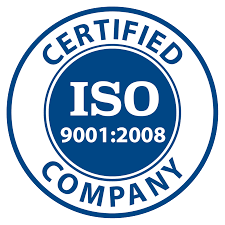Rotational Molding
Thin-walled, hollow parts that require tight tolerances are best manufactured using a rotational molding (rotomolding) process. We have the ability to create complex geometries in a single seamless part, using proprietary resins and affordable tooling.
We use the rotational molding process to create aerospace parts and high purity containers. We also have the capability to manufacture molded pieces in our ISO Class 7 Clean Room for high purity applications. View the Facility and Equipment we use.
| Advantages | Disadvantages |
|---|---|
| The ROI on parts over time can be lower than other manufacturing processes. | This process requires the tooling of a mold. |
| This process supports complex geometries, which reduces part count and installation labor time. | Rotational molding may have a higher production cost than some alternative processes. |
| Seamless parts prevent leaking. | Mold modifications are required if the design is changed. |
| Tooling cost is low. | The weight of the part may be more than parts created with other processes. |
| Durable parts that withstand impact during installation, operation, and maintenance. | There are temperature constraints of the part, due to the process being limited to plastics. |
| Uniform, consistent parts for countless production runs. |
Rotational Molding Dimensional Capabilities
We have the capability to manufacture molded parts up to 11’4” height and 11’8” diameter.
Rotational Molding Process
- The first step of the process is to mount a metal part mold to a multi-axis rotational molding machine. Thermoplastic resin is placed inside the mold, and in some circumstances, components such as mounting nuts or brackets are inserted at this time as well.
- The mold is then rotated inside of an oven. As the mold rotates, the polymer becomes molten and forms an even layer across all internal surfaces.
- Next, the mold goes through a cooling process to set the newly molded plastic part in place.
- The mold is then removed from the machine and the plastic part is carefully taken out of the mold. The resulting seamless thermoplastic piece can be machined to tight tolerances, painted, or otherwise finished and assembled with other parts.
Rotational Molding Materials
We use a variety of thermoplastic polymers in our rotational molding process. Below are the materials we use.
Contact us to discuss what material is the best solution for your project.
| Material | Trade Name | Characteristics | Maximum Service Temperature | Application | Data Sheet |
|---|---|---|---|---|---|
| PFA | Teflon | PFA rotomolded products have: High purity and chemical resistance |
Operating temperature of -268°C/-45°F to 260°C/500°F to | High Purity | |
| PVDF | Kynar | PVDF rotomolded products have: Good chemical resistance Durable |
260° F/127° C | High Purity Aerospace |
|
| Nylon 12 | RMB437 | Nylon rotomolded products have: Low moisture absorption High impact resistance |
220° F / 104° | Aerospace | |
| Nylon 12 | RMB 421C | RMB 421C Nylon rotomolded products have: Low moisture absorption High impact resistance High Chemical Resistance |
220° F / 104° | Military Aerospace, Food Processing |
|
| Nylon 12 | RMB 437 * Replaced RMB435 in 2013 |
RMB 437 Nylon rotomolded products have: Non-brominated flame retardant qualities High Chemical Resistance |
220° F / 104° | Aerospace | |
| Nylon 12 | RMB 9103KO | RMB 9103KO Nylon rotomolded products have: Non-brominated flame retardant qualities High Chemical Resistance |
220° F / 104° | Aerospace | |
| HDPE | HDPE rotomolded products have: High strength-to-density ratio High chemical resistance Abrasion Resistance |
220° F / 104° | High Purity | ||
| Polypropylene | Polypropylene rotomolded products have: Excellent chemical and environmental stress crack resistance Impact resistance Semi-rigid (durable and flexible) |
230° F / 110°C | High Purity |



